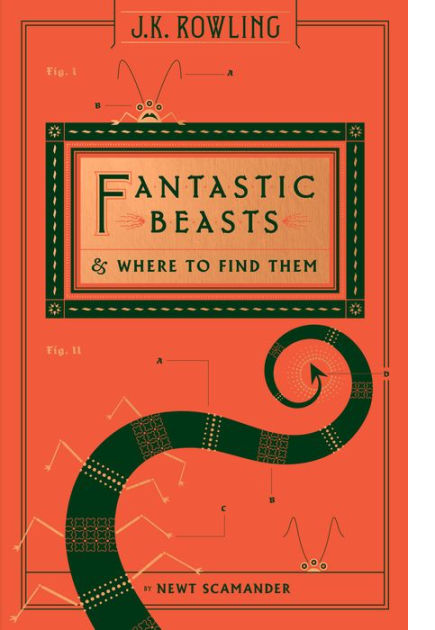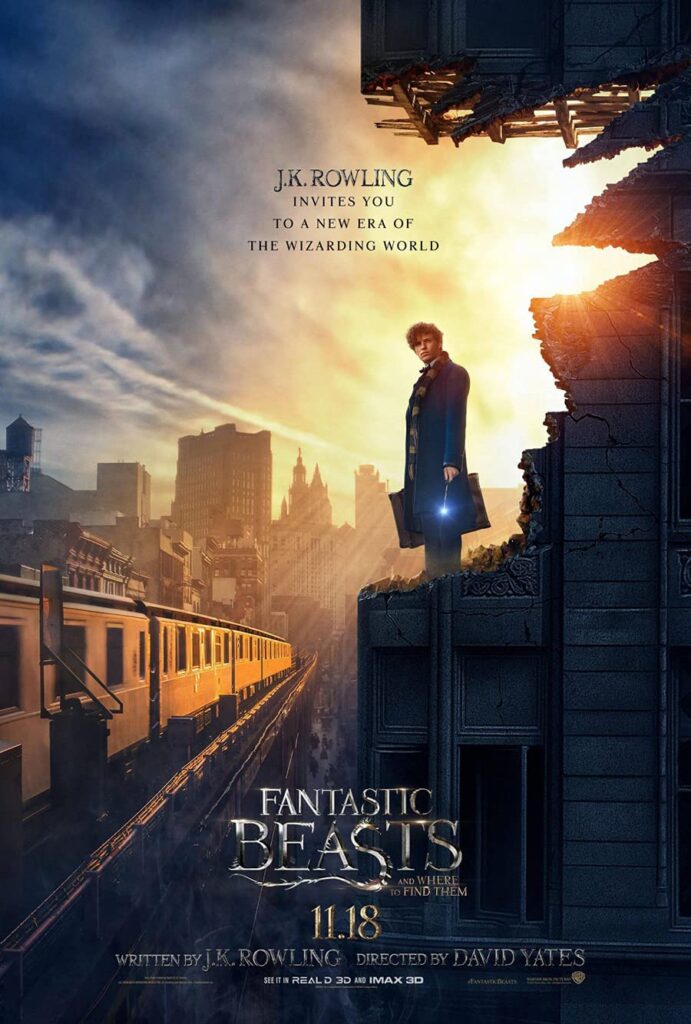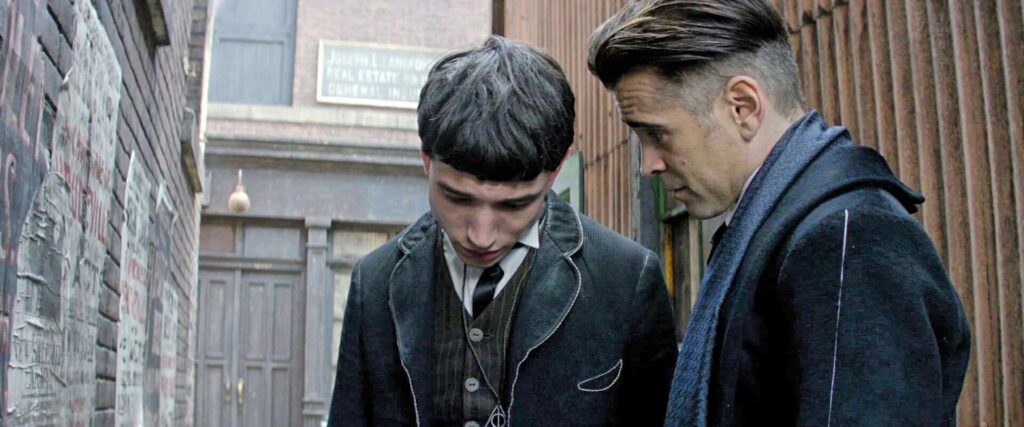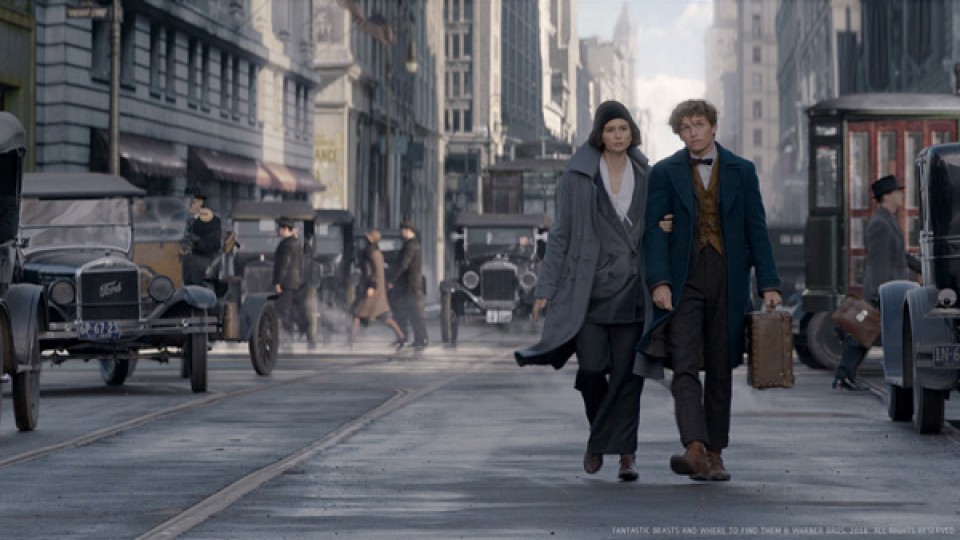In July 2011, it ended. Adapting the final novel in rags-to-riches author J. K. Rowling’s young adult fantasy book series, Harry Potter and the Deathly Hallows – Part 2 marked the eighth and final entry in the film series that had defined pop culture for a generation. For a full decade, fans had aged alongside Daniel Radcliffe, Rupert Grint, and Emma Watson, starring as the heroic trio in the once-in-a-century, intergenerational story; a world that captivated Millennials, then grew up with them; a pop culture phenomenon to rival Star Wars. And now, it was over.
Sure, the $8 billion box office revenue of the Potter films were really just a portion of the “Wizarding World” franchise’s $33 billion in earnings since The Philosopher’s Stone‘s publication in 1997 (with the remaining billions earned by books, merchandise, video games, home video, and of course, theme parks)… But even so, the end of the film series serving as the Wizarding World’s cinematic tentpole would inevitably signal the end of a previously-assured billion dollar box office every other year or so, serving as a definitive finish to a finite franchise.
… Or would it? In 2013 – just two years after the $1.3 billion-earning send-off to Potter – J. K. Rowling and Warner Bros. announced that they’d begun pre-production on a new film that would expand the Wizarding World as never before – set decades before and far from the events of Harry Potter.

You have to remember that when Fantastic Beasts and Where To Find Them was announced, fans knew only that the film would follow the exploits of wizard explorer and “magi-zoologist” Newt Scamander on his international adventures that would eventually lead him to write the textbook of the same name that would one day end up on Harry, Ron, and Hermione’s Hogwarts school supply lists. The idea of a subtle connection to Potter lore opening up an entirely new corner of the Wizarding World was spectacular. And at least on paper, so were the storytelling opportunities.
Set in the 1920s and ’30s, images were conjured in fans’ minds of the Wizarding World’s Indiana Jones; an explorer and adventurer, braving ancient temples and magical jungles in search of the rarest, wildest, and most dangerous of the Wizarding World’s creatures; a fun, colorful, adventurous, pulpy, and low-stakes exploration of a corner of the Wizarding World we’d never seen. It stood to reason that the globetrotting exploits of Scamander and his research into fantastic creatures could even become a standalone franchise in its own right – a potential made all the more real when it was announced in 2014 that before the film had even gone into production, Fantastic Beasts had been pre-approved for three films set in – but exploring a vastly different corner of – Harry Potter’s world.
Sounds fun, right? Then, the troubles began.
Fantastic Beasts…
Fantastic Beasts and Where To Find Them made its debut in 2016. To be sure, the film earned positive reviews and earned a high-respectable $800 million. But at least for many, it wasn’t really what they’d expected.

For better or worse, the Fantastic Beasts series follows Newt Scamander – not a rugged, Oscar Isaacs-type, Indiana Jones-esque explorer, but a timid, buttoned-up, and introverted worker for the Ministry of Magic played by the soft-spoken Eddie Redmayne, wrapped in a perpetual peacoat. His adventures take place not in exotic jungles or Forbidden Forests, but in New York City of 1926, where an enchanted suitcase of iridescent, unusual, CGI, Rowling-invented creatures (a divergence from the classic unicorns, dragons, mermaids, centaurs, and spiders of the Harry Potter world) accidentally, anti-climactically opens.
Scamander allies with Tina Goldstein (a former Auror caught in the bureaucracy of the Magical Congress of the United States, or MACUSA) as well as a “No-Maj” (apparently, the American equivalent to the British “Muggle”) New Yorker named Jacob Kowalski. From there… well… let’s ask: do you remember the plot of Magical Creatures and Where To Find Them?

We’ll give you a hint: it involves an anti-witchcraft legion of puritans who live in a ramshackle old schoolhouse weirdly set in the middle of Manhattan, whose adopted child Credence (Ezra Miller, in the actor’s second high-profile Warner Bros. franchise after playing DC’s The Flash) has so much repressed magical potential, it turns into a violent force called an Obscurus. MACUSA weirdly sentences Newt and Tina to death because a creature killed a senator, but they escape. Also, there’s a detective played by Collin Farrel who’s actually using a Polyjuice Potion (hey, I remember those!) to disguise that he’s not Collin Farrel, he’s Johnny Depp, playing the “Voldemort” of early 20th-century Wizarding World, Gellart Grindelwald, who was remembered as a long-dead bad guy and one-time Dumbledore foe by Harry Potter’s time.
Look, Fantastic Beasts didn’t have an easy job to begin with in expanding the Wizarding World. It’s okay that the movie was (as reviews put it) “bogged down by exposition” or a bit of a “slog,” having to introduce so much new world-building and a whole new cast of characters. It’s also okay – bold, even – that Fantastic Beasts was willing to leave Diagon Alley, Hogwarts, and other iconic locales behind.

And even if viewers can get the strict sense that Rowling doesn’t know much about New York City, American government, or America’s home-grown concepts of magic and magical creatures, a New York City of the 1920s is a clever, intriguing setting no one would’ve expected from the Wizarding World’s next era.
Sure, Fantastic Beasts is a little color-drained, and pretty CGI-heavy, and a little too in-the-weeds with world-building. But the 2016 film was a sizable hit for Warner Bros., earning $814 million across its theatrical run and scoring a respectable 74% on Rotten Tomatoes. While that ranked it below any mainline Harry Potter film, it was a substantial showing for a spin-off film so narratively distant from the Potter line – for all intents and purposes, a legitimate “original” story.
Then, it started to crumble…
… and How To Lose Them
Even if fans largely enjoyed Fantastic Beasts, it’s probably fair to say that its reception had something in common with Avatar. That is: it was received well, made good money, and then sort of… disappeared. Fantastic Beasts never quite picked up that “water cooler” buzz, and it just didn’t seem to leave many footprints in pop culture. (If we hadn’t told you that the film’s “Ron and Hermione” equivalent were named Jacob and Tina, would you have remembered?) Fantastic Beats didn’t introduce any “theme park-able” settings, snacks, or souvenirs… no memorable characters or quotes… and frankly, not even any iconic, recognizable, or fantastic creatures.
It didn’t necessarily feel that Fantastic Beasts screamed out for two follow up films. Which made it even stranger that in the months leading up to the films release, Warner Bros. and J.K. Rowling revised their promise, proclaiming that Newt’s adventures would now span a five film franchise. That made Fantastic Beasts similar to Avatar into another way: it left industry commentators wondering who, exactly, was clamoring for more.
Obviously, the second Avatar film proved naysayers wrong. The second Fantastic Beasts, though…? Well…


